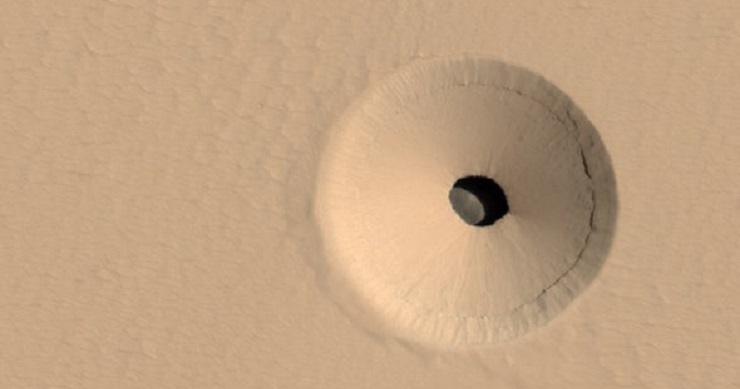Celestial data-gathering equipment has long included the use of scientific satellites and rovers. One area these orbiting fact-finders have perused extensively is the surface of Mars. But while scientific researchers have garnered a wealth of data about the red planet’s surface level, there remains a dearth of knowledge regarding it’s interior.
The surface of Mars reveals many openings, which scientists conjecture could indicate a planet-wide web of caverns. Further theorizing suggests such structures could prove useful to future astronauts. Mars is known to have a highly inhospitable surface with almost no atmosphere, and therefore no protection from radiation.
A new study put out by Spain’s National Institute for Aerospace Technology, however, suggests that Mars’ interior structures would likely experience greatly lessened radiation levels. Though as yet unexplored, Mar’s caverns could be a way for future landers on Mars to shelter away from the planet’s deadly radiation.
Signs of life may also be easier to find in the red planet’s interior, away from the deadly radiation on the planet’s exterior.
Key Takeaways:
- We have explored much of the surface of Mars, but not its subterranean world or its cave system.
- The caves of Mars could possibly be used to shelter astronauts in the future.
- A new study from Spain found that radiation levels in Mars’s caves are likely to be much lower than on the surface.
“Mars has very little atmosphere and no magnetic field, meaning that its surface is being constantly bombarded by harmful solar radiation that would make living there without protection impossible.”
Read more: https://www.unexplained-mysteries.com/news/350240/martian-caves-could-act-as-radiation-shelters
References:
- Unexplained Mysteries (Website)
- Atomic Frontier (YouTube Channel)


Leave a Reply